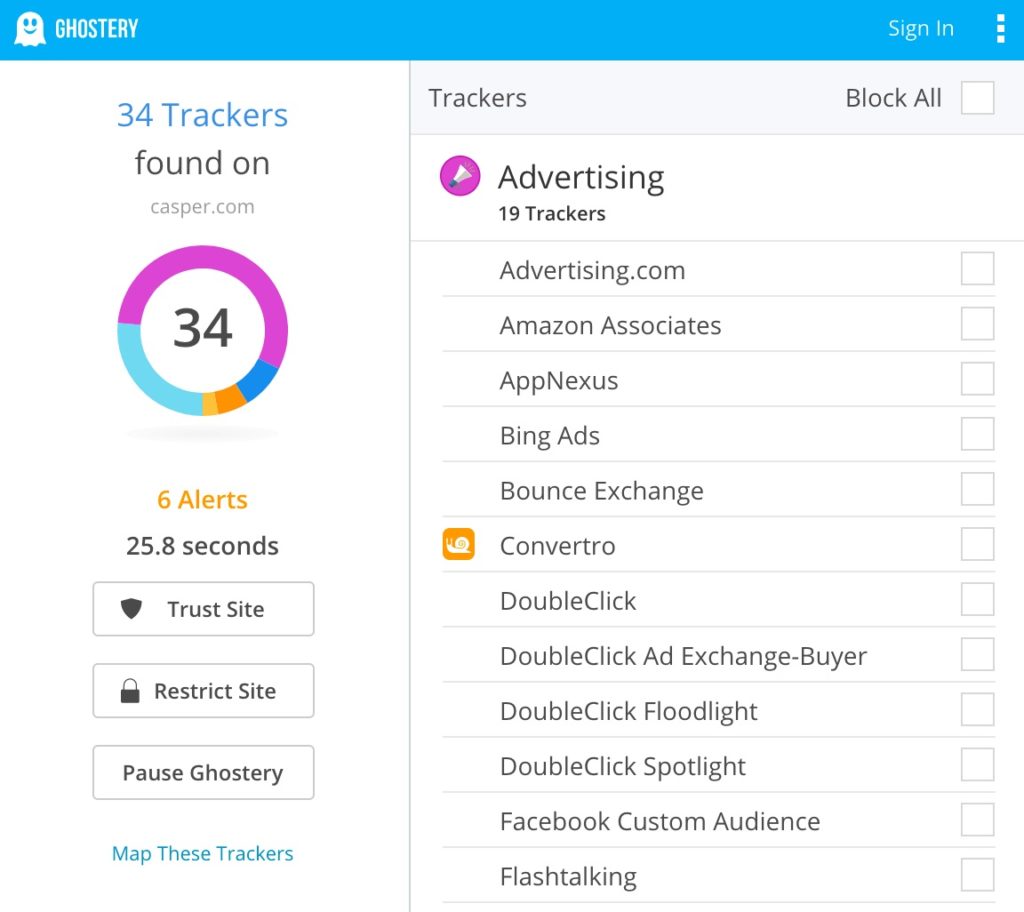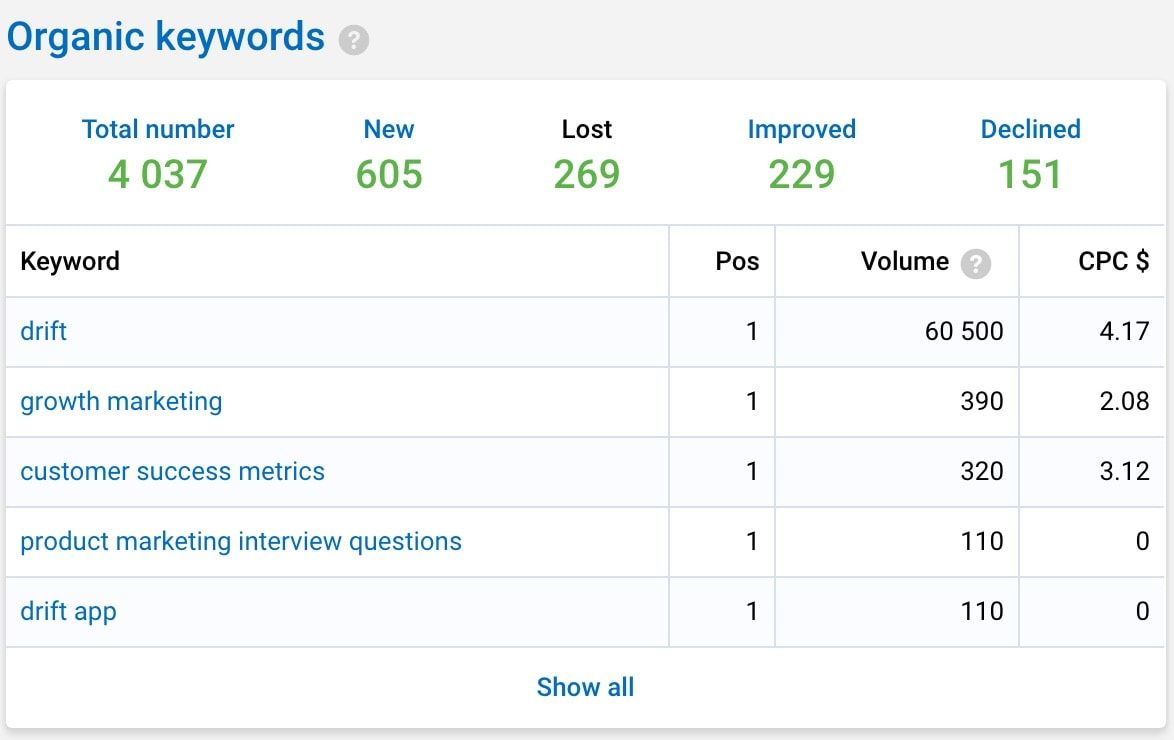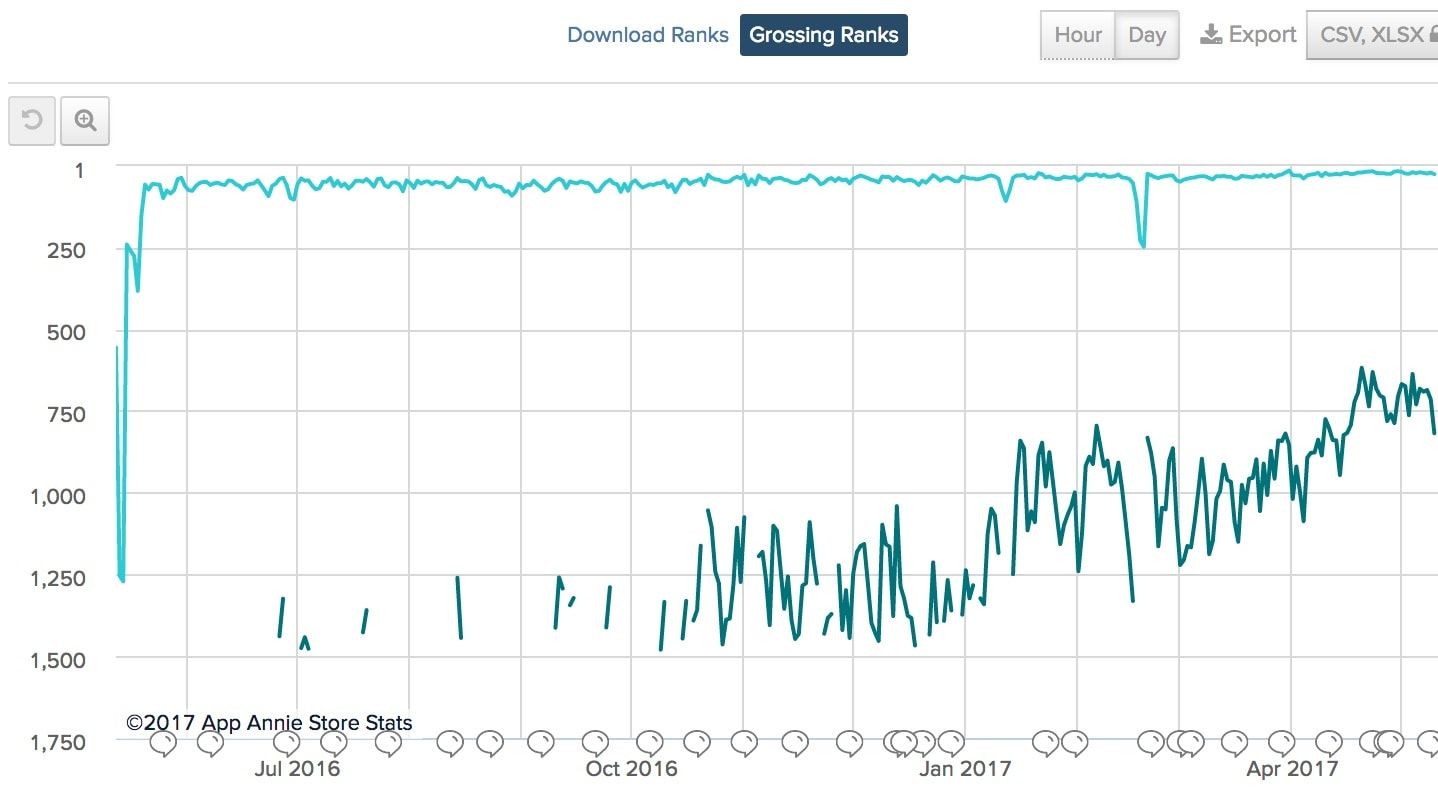5 Free Competitor Analysis Tools For Finding What’s Working

The fastest way to get better is to study the best, then put what you’ve learned into action.
That means looking at what the leaders in your industry are doing. It could mean analyzing what your competition is doing.
Practically speaking, competitor analysis means keeping tabs on what’s out there in podcasts, blogs, and webinars. Going to events and sniffing around for info.
But sometimes you gotta poke around for yourself. You have to figure out what companies are actually doing — not just what people say they are doing.
It means going beyond what their VP marketing reveals in keynote conferences and webinars.
With these free competitive research tools, it’s much easier to dissect the customer acquisition strategies of top companies in your industry, then look at what how they’re doing it.
1. Ghostery
Ghostery is like an adblocking plugin, but can be used for competitive analysis purposes.
You can use it to see what software your competition / the industry leader is using on their website.
What analytics suite are they using? What are they using for capturing leads and marketing automation? Have they recently added a new advertising tag?
For example, if I was competing with Casper:

It might be surprising that they run ads on Bing.
Convertro is for helping with cross-device / offline attribution, which tells me that offline ad spend is a priority for them — making me reflect on my own meatspace ad budgets.
When you study which plugins and apps your competition uses, you’ll often see differences with your own software toolkit. When you see these differences, you have some valuable information about what may be working for them and what’s not.
An honorable mention goes to Builtwith, which does the same thing but not as a browser extension.
2. LinkedIn
Use LinkedIn to spy on the profiles of your competition’s employees.
Most people want to put their best foot forward on LinkedIn — recruiters and potential future employers are watching. So we all usually put a mini case-study on our LinkedIn profiles. You can get a lot of useful insights by studying what your competitor’s employees say on their profiles. What have they listed as their top achievements at that company?
For example, if you read the job bullet points of your competition’s marketers and salespeople, you’ll usually see something like this:
“At company X, grew revenues 300% by implementing marketing tactic X.”
“Doubled sales efficiency by improving demo-to-close ratios.”
“Reduced app acquistion cost by implementing new Facebook Ads features.”
As you can see, browsing profiles of in your industry could give you quite a few ideas.
In addition to getting ideas for marketing tactics, you can also spy on the job postings your competition has recently published.
These give you an insight into their company growth, which teams they’re prioritizing, where they may be having problems, and which acquisition channels are working for them.
For example — if they’ve got a job posting for an SEM / PPC marketer — that means that they’ve validated Adwords as a channel, but nobody is running it full time.
That could mean that you have a window of opportunity to double down on PPC while they aren’t looking!
3. Serpstat
There’s a lot of awesome SEO tools out there you can use for competitor analysis, but they’re all paid.
Serpstat is a paid tool too, but their free tool is very generous.
With Serpstat, you can quickly figure out some of the key parts of your competitor’s SEO strategy. What keywords are they going after? Which of their pages are getting the most traffic? What might their backlink building strategy look like?
Let’s say I was analyzing what Drift was doing for search:

I would see that part of their SEO strategy is to produce TOFU-level content. Drift is a website chat app for businesses, but it appears that they’re not even bothering to compete for related phrases.
Shout out to Open Link Profiler, another great option for a free SEO tool for competitor research.
4. App Annie
If you’re in the app business, or your competition just launched an app, you really should be using App Annie.
You can quickly get an idea of how well your competition’s apps are doing.
For example, say you were competing with Duolingo. By looking at their chart on App Annie:

You’d be able to glean a few things:
- They update the app constantly (the little bubbles on the x-axis). Almost once a week.
- They (finally?) hit on a monetization strategy around October 2016.
Depending on how big the gap was between your company and Duolingo, these 2 things could easily lead to a bunch of to-dos for your development and product teams.
5. quora
Use Quora to see what your competitors’ customers and fans are saying about them.
If you ignore the answers written by your competitor’s employees, what you’ll find is candid, natural language that talks about your competitor and your industry.
This is super useful for things like updating copy to optimize conversion rates, and getting new ideas for keyword research for SEO.
The issue with Quora is that there’s a lot of noise. Lots of questions with no answers, or with low-quality responses.
So you can use this Google search operator to only view Quora answers with more than 3 answers.

I’ve found 3 answers to be the threshold for the answer to be worth looking at. Change it as you’d like.
* * *
What else would you add to this list?